Amazon Rainforest, also known as Amazon Jungle or the Amazonia.
Amazon tropical rainforest is home to various animals, strangest looking, loudest and calmest, biggest and tiniest, more dangerous and harmless Amazon Rainforest animals on the globe.
In reality both the Amazon rainforest and the Andes mountain range are habitat to more than half of the earth’s species of wildlife.
Below is the list of Amazon rainforest animals- in no specific order- is a prologue to a few of the most stunning and, in some cases, most hazardous Amazon rainforest animals.
The Amazon rainforest environment is populated by bugs, anaconda, 8-legged animals, vampire bats, reptiles, amphibians, piranhas, birds and mammals. These are some of the Amazon rainforest animals those live in jungle.
Here are some of the Amazon Rainforest Animals you’ve likely never heard of.
Candiru Fish:
This nasty creature, moreover known as the toothpick fish, has been accounted for to swim up the urogenital tract of bathers and cabins itself in that. The only treatment is removal by surgery. In nature, the pencil-formed fish parasitizes the waste channels of oceanic animals, and clearly discovers human orifices irresistible.
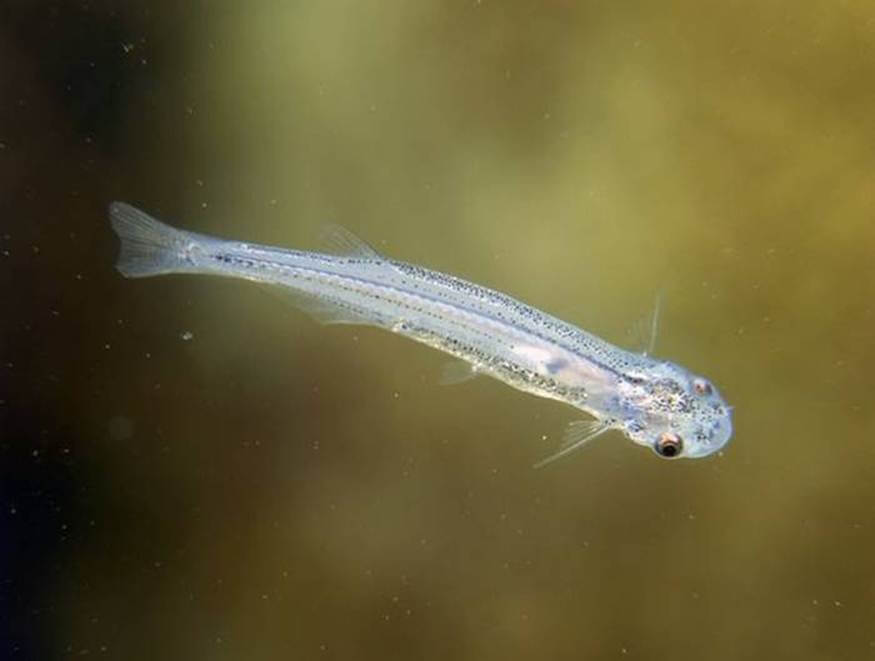
Electric Eel:
A kind of fish – not an eel – that can develop to around 8 feet long and weight of up to 60 pounds.
Abiding in muddy rivers, the electric eel carries hundreds of volts that can daze a human. Deaths credited to this animal are most probably from sinking when the paralyzed victim is not able to swim. The eel utilizes its “power” to slaughter prey and. despite its name, In spite of its name, the electric eel is not firmly identified with genuine eels but rather is the biggest member of a group of electric fish called knife fish.
Poison Arrow Frog:
These splendidly shaded frogs are small in size, yet poisonous enough as to slaughter up to 100 people.
Their tinge serves to caution potential predators. A few animal types’ poison is so virulent that only touching this rainforest animal can convey a deadly dosage. Generally, Amazon Indians tribes have been utilizing its toxin on the tip of their arrows and darts for hunting purposes.
Piranha:
Possibly the most dreaded animal in the Amazon stream.
It has an effective jaw and razor-like triangular teeth that can tear up fleshy tissue from bone in a matter of seconds.
Toucan:
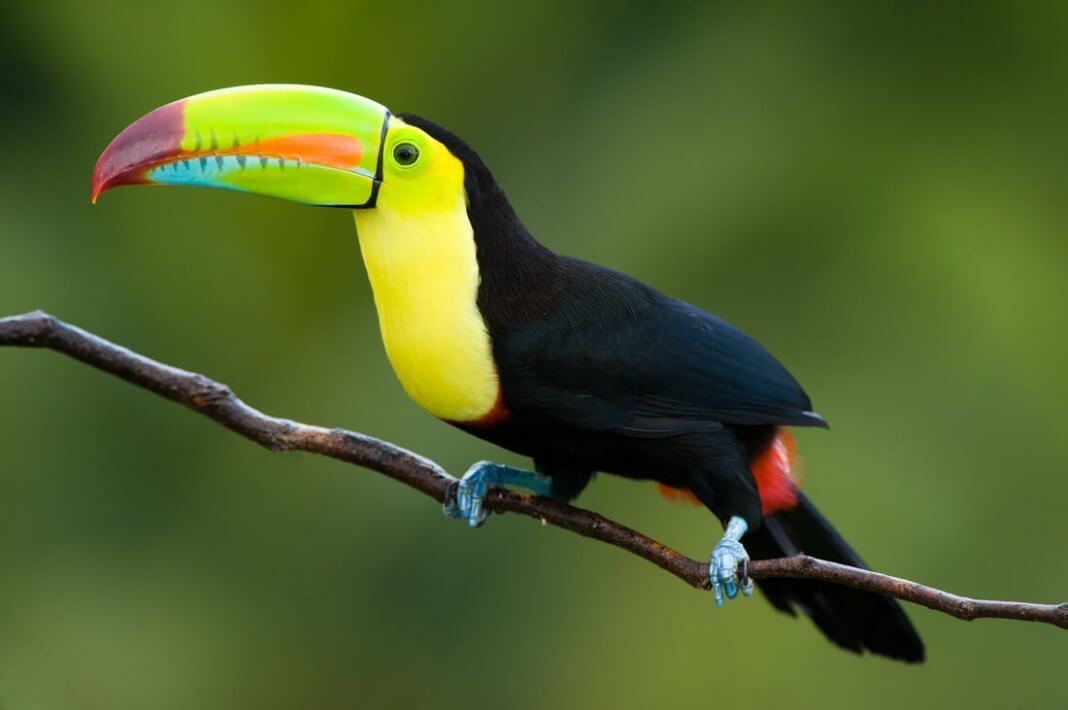
A medium-sized bird inhabitant to the Amazon rainforests, this amazon rainforest bird best identified for its big colorful beak that in spite of its large size, It can develop from around 7 inches to more than 2 feet.
Black Caiman:
This great oceanic seeker is the biggest of all crocodile species, the black caiman can develop to 20 feet long and span up to 3,000 pounds in weight. It is apparently bear a resemblance to the American alligator.
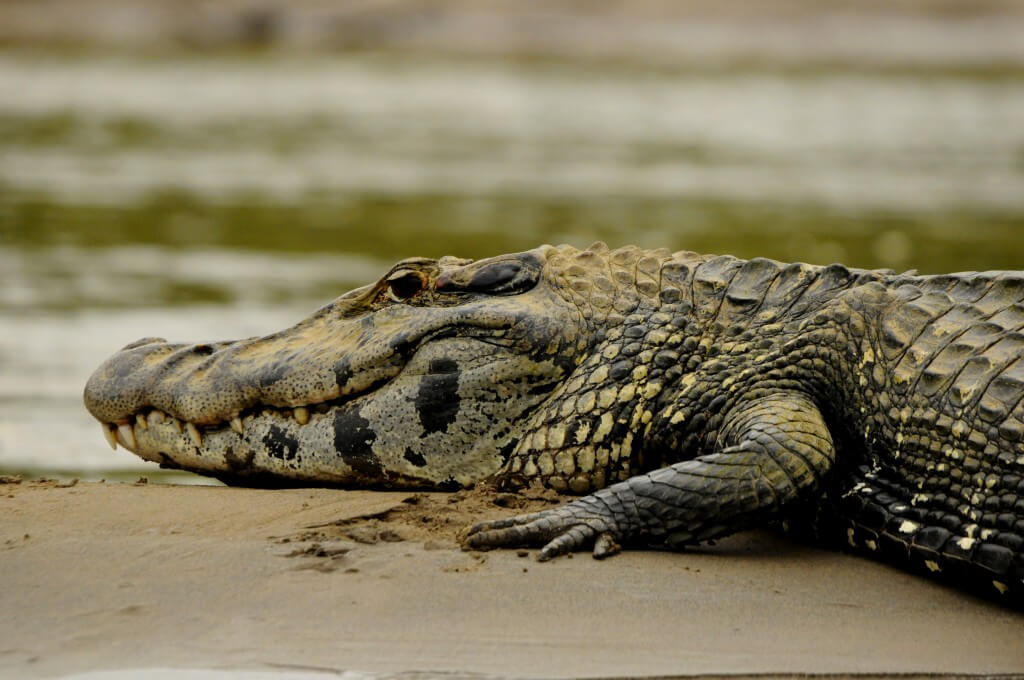
It is the biggest predator in the Amazon stream. It has no foes other than man and can eat from capybara, piranha and giant river otters to people.
Amazon Pink River Dolphin:
It is one of the most stunning animals of the Amazon Rainforest River, encompassed by a wide range of myths and legends of the jungle.
Macaw:
Biggest of the parrot family, the macaw has a pointed, snared mouth perfect for eating nuts, leafy foods. It can reach from 1 – 3 feet in size, similar to the Hyacinth macaw.
The scarlet macaw – like the vast majority of tropical rainforest macaws – is imperiled because of poaching, chasing and pulverization of living space through deforestation. Its existence is about 75 years in detention.
Sloth:
Sloth lives in the Amazon rainforest overhang, once in a while sliding from the trees. Have gigantic, snared hooks and long arms. The sloth eats primarily fruits, bugs and leaves, spending the majority of time hanging updaide down.
Potoo:
Potoo, nocturnal birds of the American tropics also identified as the common Potoo or the Great Potoo.
This amazon rainforest bird is not really a solo species, but a group of correlated species.
Amid the day, the potoo rests on a dead branch; they wake up at nightfall, revealing enormous eyes able of catching moths and other flying insects in the dim. Potoos likewise have wide and expanding mouths for getting prey amid their brisk, short, and noiseless flights.
Giant Anteater:
Armed with a 2 feet lengthy tongue, these Amazon rainforest animals can gulp down termites and ants faster. A grown-up Anteater can reach up to 8 feet in length and a weighs around 140 pounds.
Golden Lion Tamarin:
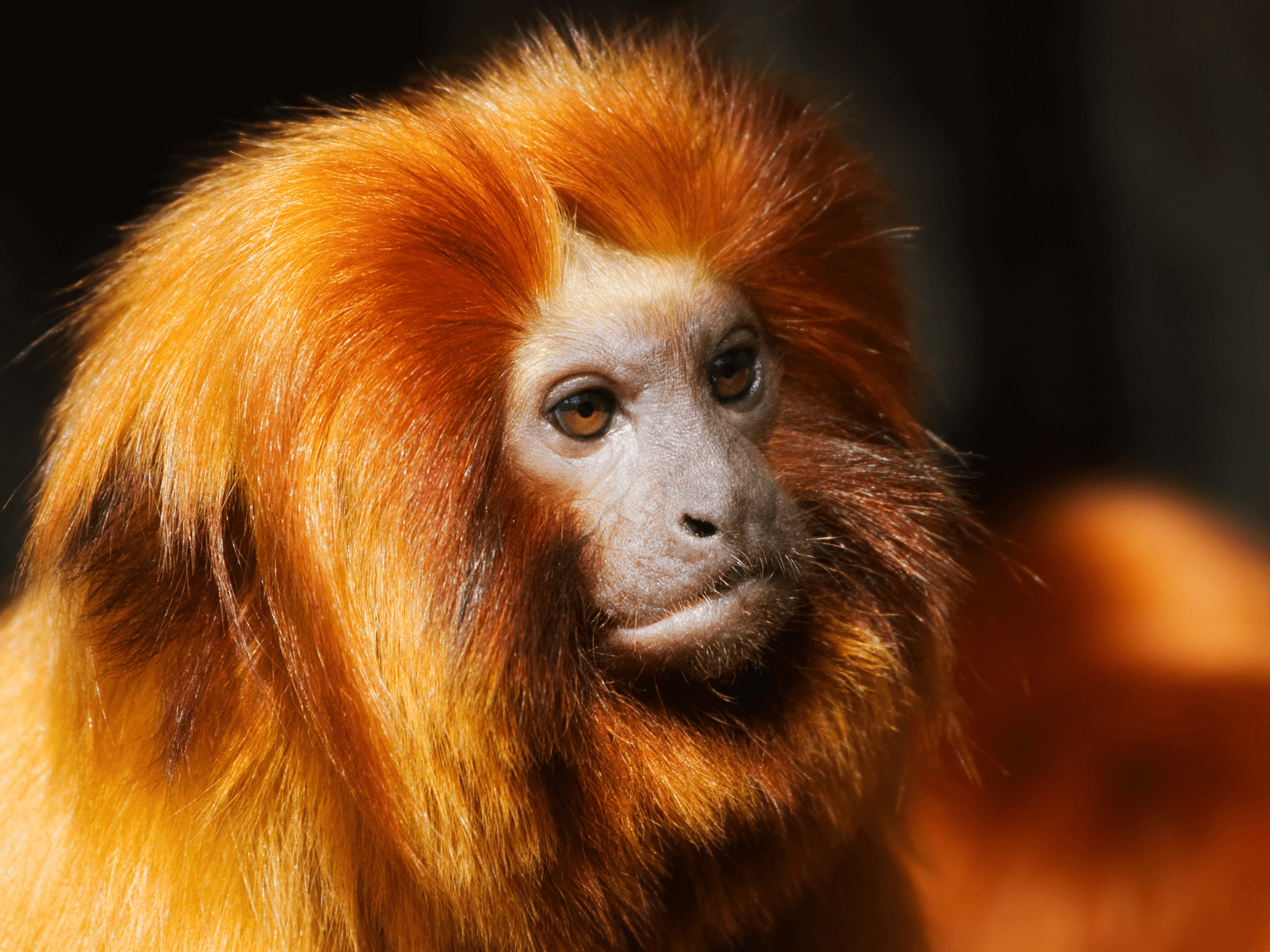
A kind of monkey of the omnivore sort, the golden lion tamarin eats fruits, creepy crawlies, bugs, reptiles, etc. It can reach up to 12 inches in length (with a 12 inches tail) and a weight of around 2 pounds.
Capybara:
Greatest rat on Earth, the capybara is around 2 feet tall and a weight about 90-100 pounds. These amazon rainforest animals are a superb swimmer, even submerged, lives and dozes in the water, showing just its nostrils above water level. It’s another imperiled species in the Amazon River. It eats aquatic vegetation, squashes, melons and grass.
Giant River Otter:
An exceedingly imperiled species of the Amazon River can grow up to 6 feet in length and weight around 60 – 70 pounds. Greatest of its kind on the planet, the giant river otter eats small reptiles, fishes and birds.
Kinkajou:
Known as honey bar, the amazon rainforest animals are in the relation to the raccoon has golden hair & a tail that can clutch twigs. It survives in trees & eats fruits. It utilizes its 5 inches lengthy tongue to grab hanging fruit and as well to lick nectar from flowers.
Glass Frog:
The glass frog’s fleshy tissue is wholly translucent, allowing you to perceive the inside organs, including the heart pumping away. The fleshy tissue takes on the tinge of encompassing vegetation, making the frog hard to see.
Amazonian Manatee:
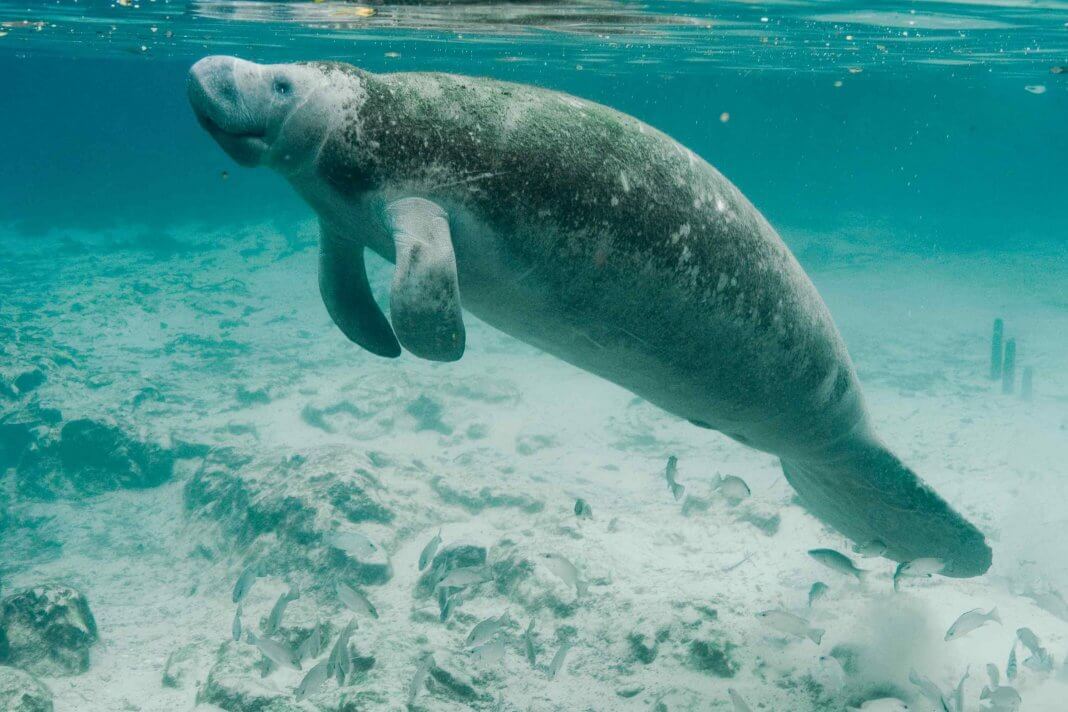
The biggest of every single marine well evolved mammal found in the Amazon River and its streams. A grown-up manatee can reach up to 3 meters in length and around 450 kg in weight.
Jaguar:
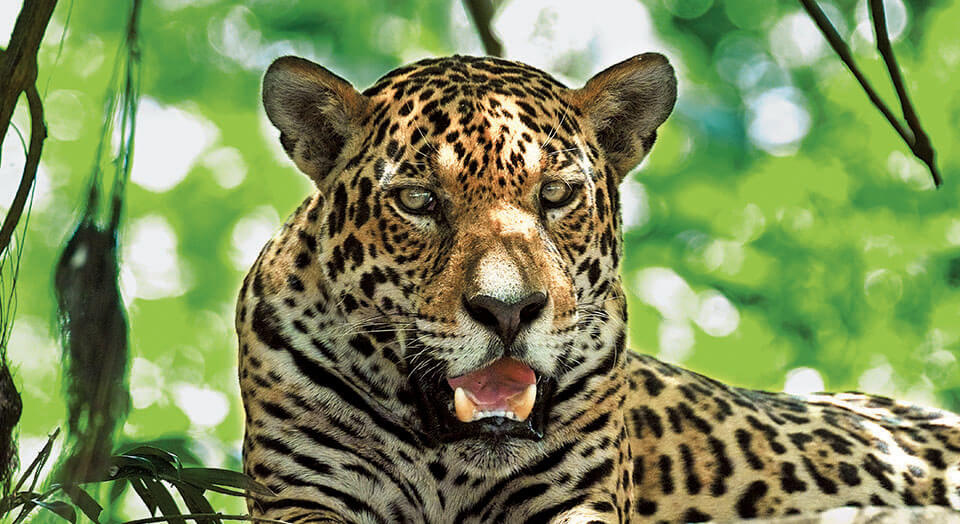
One of the most unsafe Amazon rainforest Animals also an outstanding seeker ready to swim after pirarucu or turtles, it climbs on the tree to hunt its prey. The jaguar is about 6 feet in length and weight up to 250 pounds.
Peanut Head Bug:
This strange looking bug has a swollen projection from its head that looks amazingly like unshelled nut. The implication of this appearing hindrance is doubtful, despite the fact that researchers believe it may impersonate a reptile’s head, and thus prevent inquisitive predators. The bug is generally exposed in spite of the fact that its wings bear spots that resemble an owl’s eyes, all part of its armory of deviousness.
Anaconda:
Snake of the boa constrictor sort, the anaconda develops all through its whole life, can be up to 21 feet in length and a bewildering 40 stone of mass.
It can crush it’s supplicate until it can’t inhale, then swallow it, not gnawing by any means. From capybara to humans, the boa constrictor doesn’t eat regularly, as it will take one week or more to process, as according to the size of prey.
Fishing Bat:
Shunning the normal bat eating regimen of bugs, the world’s biggest types of bat has paws like an osprey’s. It is also known as the bulldog bat due of its puppy like nose. In the corner of night, it jump down on fish whose surface swells it distinguishes utilizing its sonar. No different types of bat is able to fish.
Bullet Ant:
The world’s biggest ant that develops to the size of your pinky and also has gnaw to match. It also throbs like a wasp. Not at all like most ants it’s alone amid the day, though it lives in a nest generally at the base of a tree. It is unsure from where the name originated. Possibly being the size of a bullet can be a reason, or due to the pain of its sting is similar to a bullet. It is also known as 24 hour ant, because of the time for the ache of the sting to wear off.
Jesus Lizard:
At the point when escaping from predators, this reptile keeps running along the surface of water, for example, a lake or stream. The reptile comes to around 5 miles for every hour along these lines. It impels itself along the water, utilizing surface pressure to quickly bolster its weight. The reptile’s toes have folds of skin to make a more extensive surface and an air pocket to improve the surface pressure. However, the “wonder” soon offers approaches to physics and the reptile is compelled to swim.




























